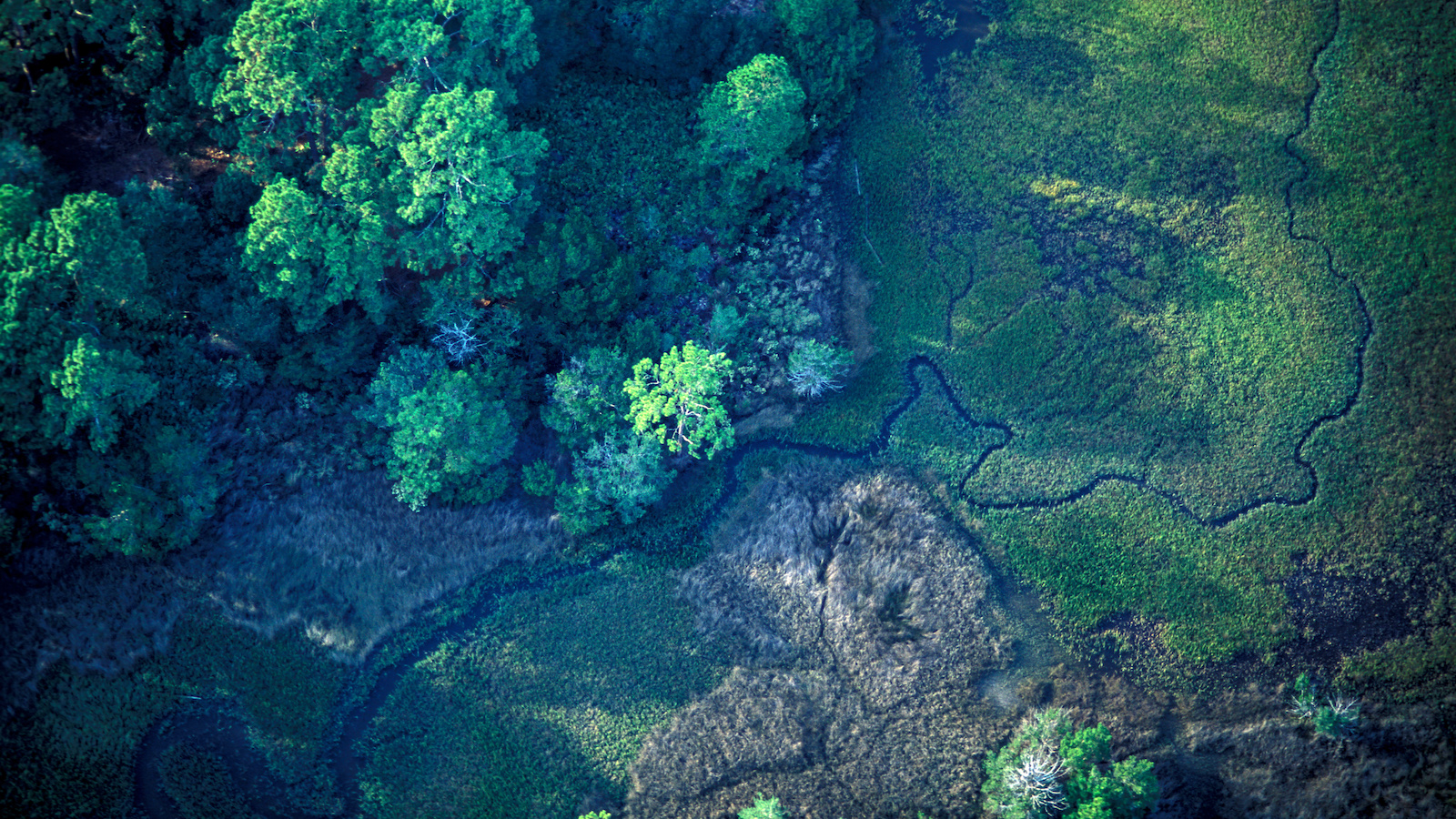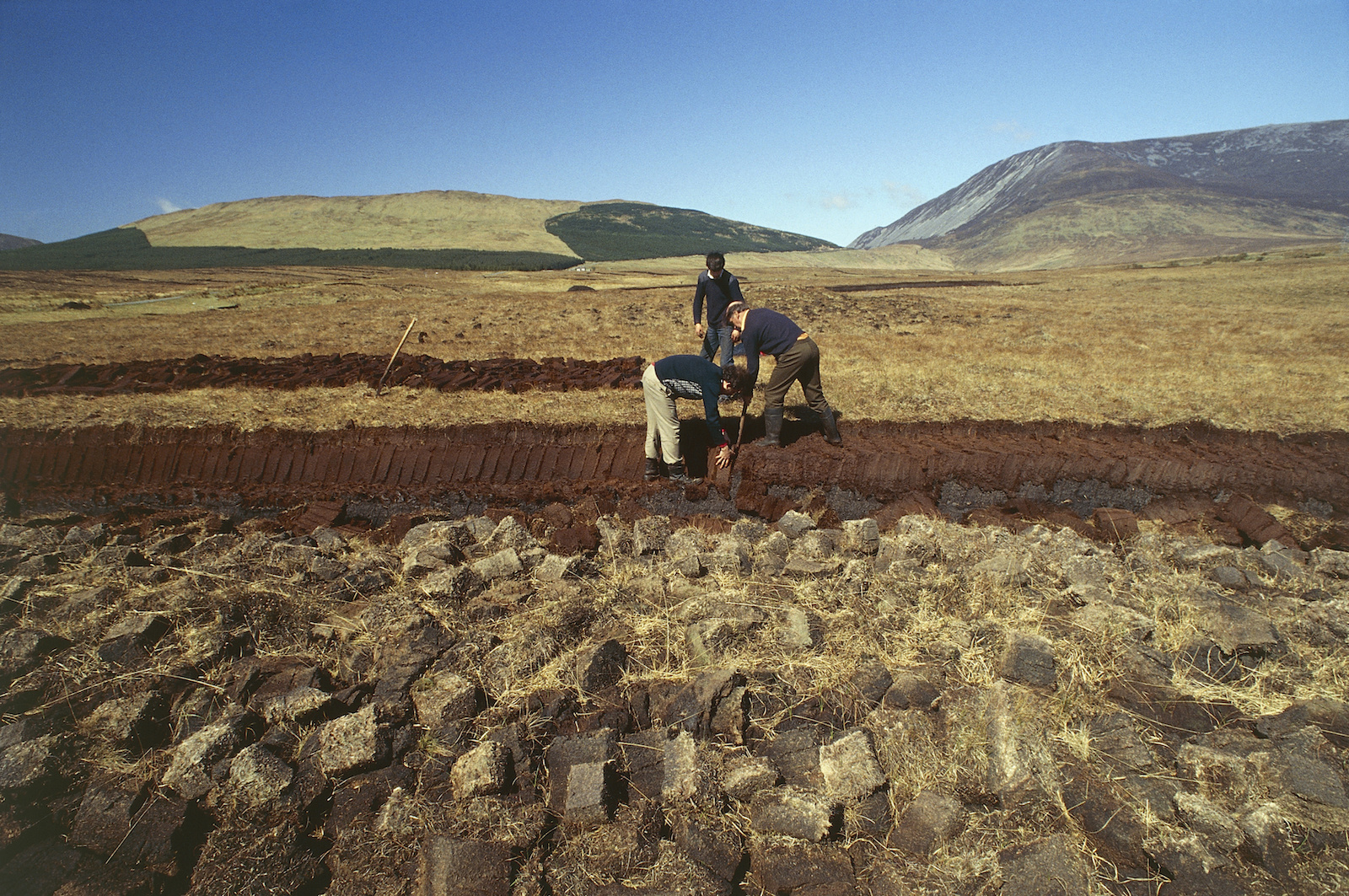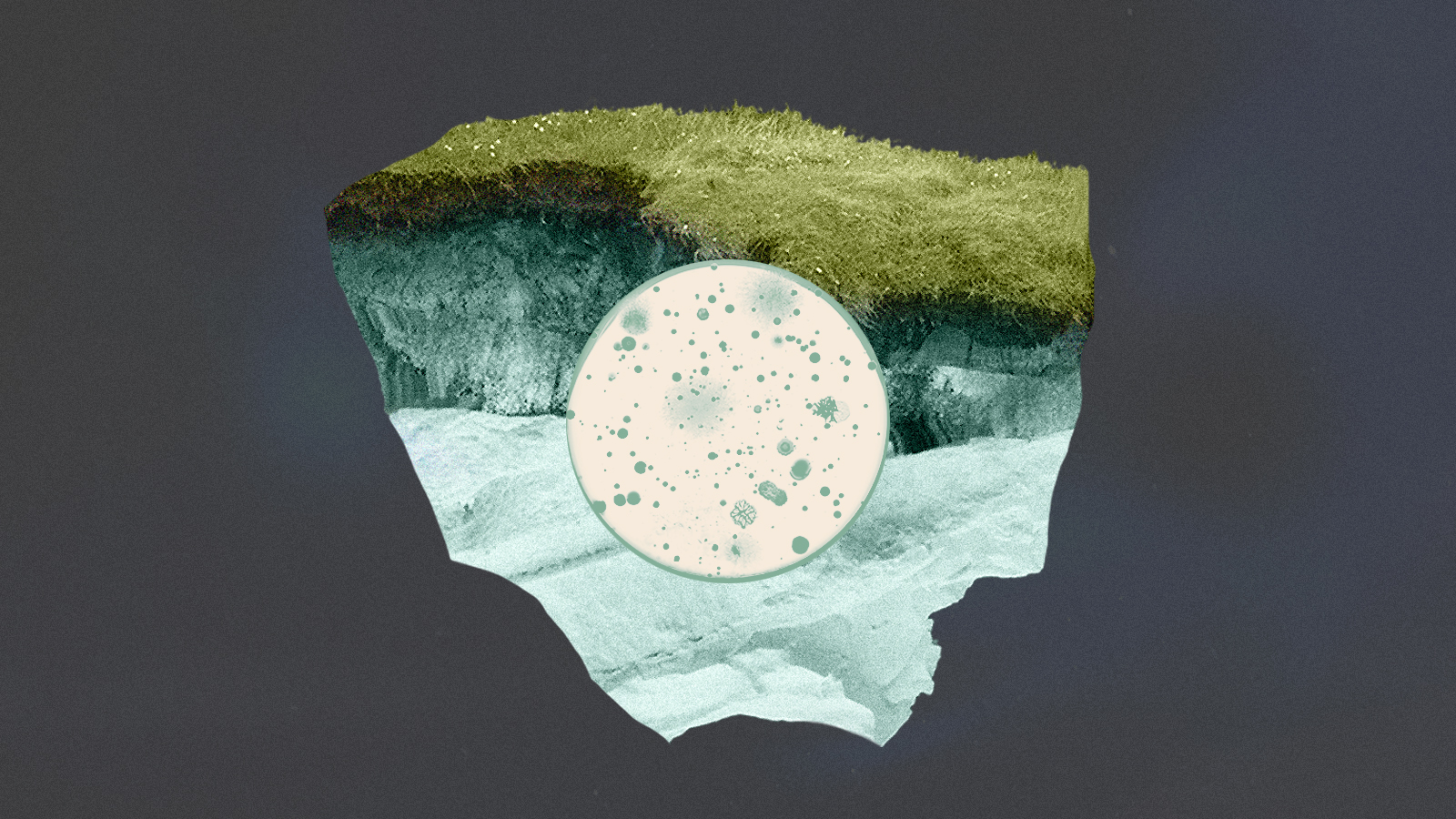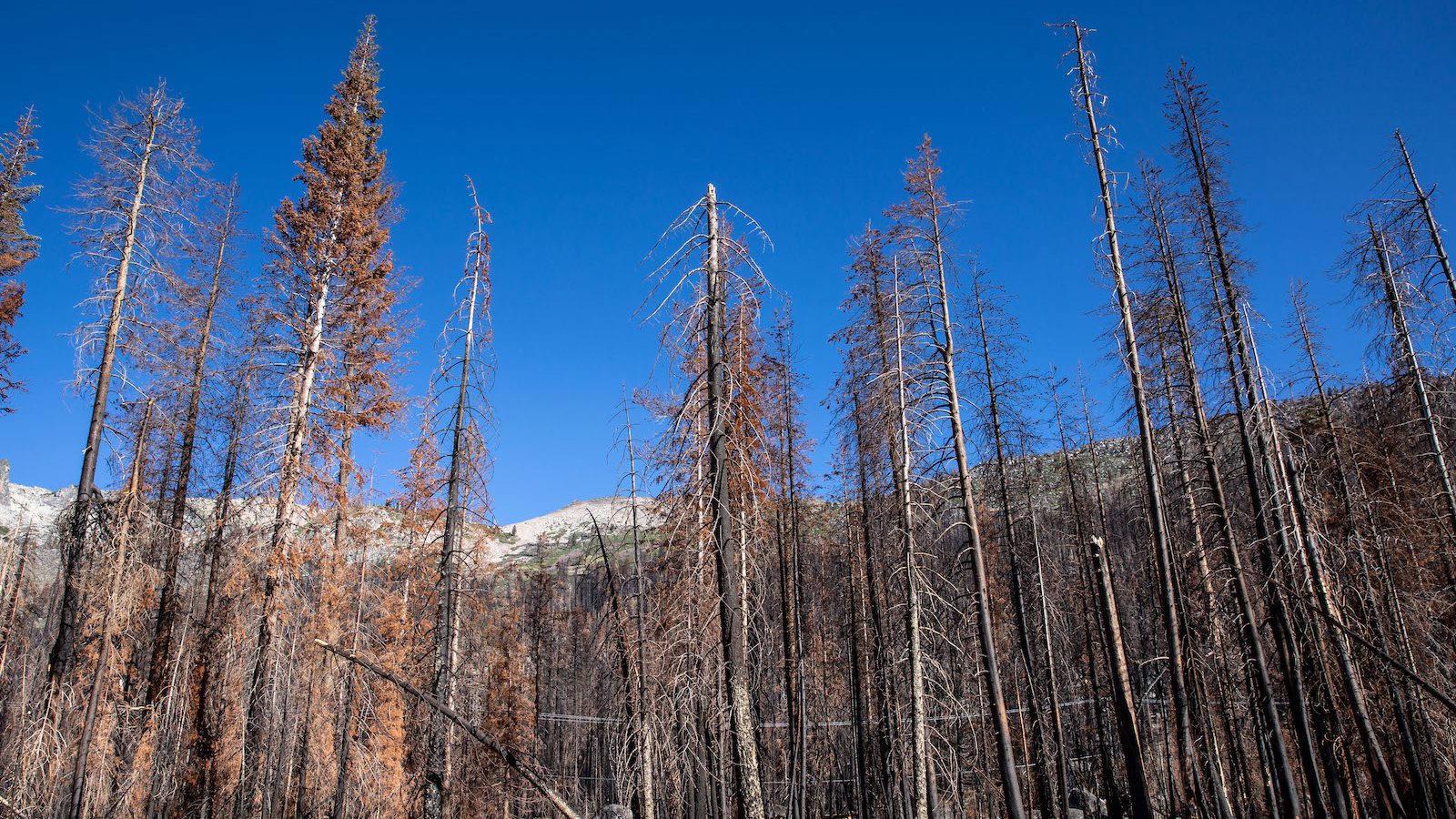Tiina Sanila-Aikio can’t keep in mind a summer time this heat. The months of midnight solar round Inari, in Finnish Lapland, have been sizzling and dry. Conifer needles on the department ideas are orange when they need to be a deep inexperienced. The moss on the forest ground, often swollen with water, has withered.
“I’ve spoken with many elderly reindeer herders who’ve by no means skilled the warmth that we’ve had this summer time. The solar retains shining and it by no means rains,” says Sanila-Aikio, former president of the Finnish Sami parliament.
The boreal forests right here within the Sami homeland take so lengthy to develop that even small, stunted bushes are sometimes a whole lot of years previous. It’s a part of the Taiga — which means “land of the little sticks” in Russian — that stretches across the far northern hemisphere by Siberia, Scandinavia, Alaska, and Canada.
It’s these forests that helped underpin the credibility of essentially the most bold carbon-neutrality goal within the developed world: Finland’s dedication to be carbon impartial by 2035.
The legislation, which got here into drive two years in the past, means the nation is aiming to achieve the goal 15 years sooner than lots of its EU counterparts.
In a rustic of 5.6 million folks with almost 70 % coated by forests and peatlands, many assumed the plan wouldn’t be an issue.
For many years, the nation’s forests and peatlands had reliably eliminated extra carbon from the ambiance than they launched. However from about 2010, the quantity the land absorbed began to say no, slowly at first, then quickly. By 2018, Finland’s land sink — the phrase scientists use to explain one thing that absorbs extra carbon than it releases — had vanished.
Its forest sink has declined about 90 % from 2009 to 2022, with the remainder of the decline fueled by elevated emissions from soil and peat. In 2021 and 2022, Finland’s land sector was a web contributor to world heating.
The influence on Finland’s total local weather progress is dramatic: Regardless of slicing emissions by 43 % throughout all different sectors, its web emissions are at concerning the identical degree because the early Nineties. It’s as if nothing has occurred for 30 years.
The collapse has huge implications, not just for Finland however internationally. No less than 118 international locations are counting on pure carbon sinks to fulfill local weather targets. Now, by a mixture of human destruction and the local weather disaster itself, some are teetering and starting to see declines within the quantity of carbon that they absorb.
“We can’t obtain carbon neutrality if the land sector is a supply of emissions. They should be sinks as a result of all emissions can’t be decreased to zero in different sectors,” says Juha Mikola, a researcher for the Pure Sources Institute Finland (Luke), which is chargeable for producing the official authorities figures.

“When these targets have been set we thought that land removals can be round 20 million to 25 million tons and we may attain the goal. However now the scenario has modified. The principle cause is the forest land sink lowering by virtually 80 %,” he provides.
Tarja Silfver, a analysis scientist at Luke, says: “It makes the targets actually arduous to attain. Actually, actually arduous.”
The explanations behind these adjustments are difficult and never absolutely understood, say researchers. Burning peatland for vitality — extra polluting than coal — stays widespread. Industrial logging of forests — together with uncommon primeval ecosystems fashioned because the final ice age — has elevated from an already relentless tempo, making up the vast majority of emissions from Finland’s land sector. However there are additionally indications that the local weather disaster has develop into a driver of the decline.
Rising temperatures in essentially the most quickly warming a part of the planet are heating up Finland’s soils, rising the speed at which peatlands break down and launch greenhouse gases into the air. Palsas — huge mounds of frozen peat — are quickly disappearing in Lapland.
The variety of dying bushes additionally elevated in recent times as forests are confused by drought and excessive temperatures. In southeast Finland, the variety of dying bushes has risen quickly, rising 788 % in simply six years between 2017 and 2023, and the quantity of standing deadwood — decaying bushes — is up by about 900 %.
The nation’s forests, principally planted after the tip of the second world warfare, are additionally maturing, approaching the utmost quantity of carbon that they’ll naturally retailer.

Bernt Nordman, from WWF Finland, says: “5 years in the past, the final narrative was that the forests in Finland are an enormous carbon sink — that truly they’ll offset emissions in Finland. This has modified very, very dramatically.”
These adjustments, whereas anticipated by local weather scientists, are worrying policymakers. Finland shouldn’t be alone in its expertise of decline or vanishing land sinks. France, Germany, the Czech Republic, Sweden, and Estonia are amongst people who have seen vital declines of their land sinks.
Drought, climate-related outbreaks of bark beetle, wildfire, and tree mortality from excessive warmth are ravaging Europe’s woodlands on prime of stress from forestry. Throughout the EU, the quantity of carbon absorbed by its land annually fell by a few third between 2010 and 2022, based on the most recent analysis, endangering the continent’s local weather goal.
Johan Rockström, of the Potsdam Institute for Local weather Affect Analysis, says: “The explanations [for Finland’s shift] should not absolutely explored however it’s very doubtless a mixture of unsustainable forest administration and in addition dieback due to droughts and excessive climate circumstances. We see comparable developments in Canada, very a lot from illness outbreaks, but additionally in Sweden.
“These are international locations within the temperate north which have factored of their carbon sink as a really central a part of their local weather coverage,” he says. “It’s such an enormous threat for these governments.”
In Salla, southern Lapland, Matti Liimatainen and Tuuli Hakulinen stroll by the remnants of a uncommon primeval forest. Black lichen hangs from the branches above huge, waist-high ant nests. On both facet of the muddy observe, lifeless gray bushes stand in a sea of inexperienced — a sign, the forest campaigners say, that this space has by no means been disturbed by people earlier than.

However the street they’re on is freshly cleared: a forestry observe to permit loggers in. Behind them lies a barren, clear-cut tract of land, studded by stumps and naked earth. Quickly, the surviving bushes will likely be changed into pulp.
Liimatainen, a Greenpeace forest campaigner, and Hakulinen, undertaking supervisor with the Finnish Affiliation for Nature Conservation, have traveled to the distant forest to doc uncommon species that dwell there, a part of a cat-and-mouse recreation with the forestry business. By establishing the presence of endangered wildlife, they hope to stop the mills getting sustainable timber certification and grant the forest a keep of execution.
“This was a part of a large old-growth forest and it was lower down final winter,” says Liimatainen, pointing to the clear-cut expanse.
A fraction of Finnish forest is believed to be untouched, typically discovered on or round peatlands, however there’s little formal safety from the federal government. New areas are commonly cleared for pulp and lumber.
Researchers say that slowing forest clearance, higher safety for intact ecosystems, and improved forest administration may assist to revive Finland’s land sink. However the price has led to resistance from the forestry business.
Finland’s finance ministry estimates that harvesting a 3rd much less would scale back GDP by 2.1 %, costing between 1.7 billion and 5.8 billion euros (between $1.84 billion and $6.28 billion) a 12 months. Rising forest safety would additionally price the nation a whole lot of hundreds of thousands of euros, based on the Finnish Nature Panel. The state owns 35 % of forests, whereas non-public homeowners, corporations, municipalities, and numerous organizations personal the remainder.

Finland’s main timber corporations say the nation’s forests nonetheless take up extra carbon than they launch, whereas acknowledging that the quantity has shrunk dramatically in recent times. Fossil fuels, moderately than forestry, symbolize the largest menace to the local weather, they are saying.
A spokesperson for Metsä Group, a cooperative of greater than 90,000 forest homeowners, says that at any time when forest is harvested, new bushes are planted, which suggests carbon sequestration could be elevated over the long run.
A spokesperson for UPM, a Finnish forestry agency, says the 2035 carbon-neutrality goal is overly optimistic and “too many local weather coverage hopes have been pinned on the land-use sector sinks”.
“The requires proscribing harvesting typically miss the purpose that the state owns roughly 1 / 4 of Finnish forests. The federal government can prohibit harvesting in its personal land whether it is keen to bear the numerous direct and oblique monetary penalties,” they are saying.
Underneath the right-wing authorities that was elected final 12 months, a lot much less emphasis has been placed on assembly local weather targets. The Finnish authorities didn’t reply to The Guardian’s request for remark.
However researchers warn that rising world temperatures are prone to additional degrade Finland’s land sink. Research point out that throughout boreal ecosystems, the forest is shedding its capability to soak up and retailer as a lot carbon.
“There are some actually critical scientific eventualities the place, if local weather change proceeds, the spruce in Finland won’t survive, not less than in southern Finland,” says Nordman. “The entire forestry system is predicated on this tree.”
For communities which have at all times lived within the Arctic Circle, the adjustments are already clear. As autumn approaches, Sanila-Aikio is making ready for the return of the reindeer from their summer time feeding grounds forward of an unsure winter.
If the dry spell holds, there won’t be mushrooms for the reindeer, she explains. “If they don’t fatten up, they’ll starve,” she says.





